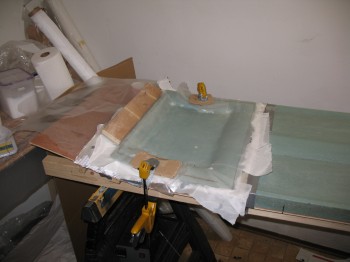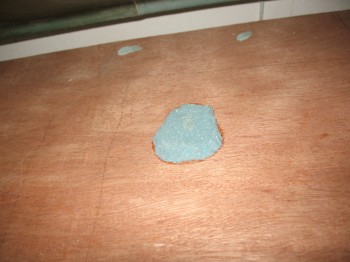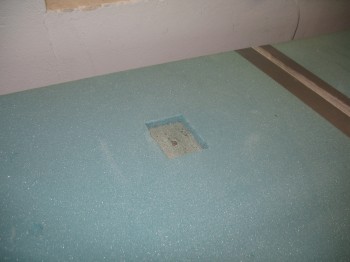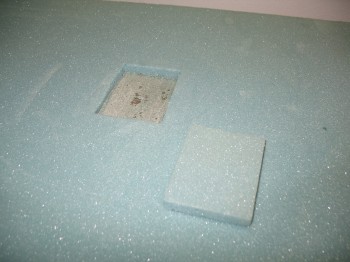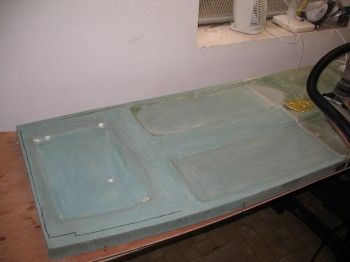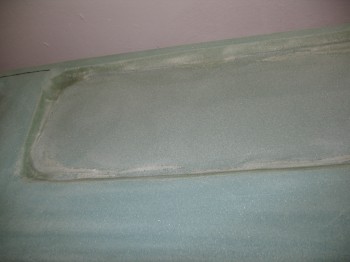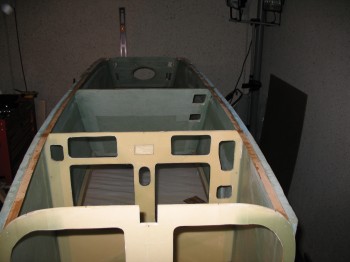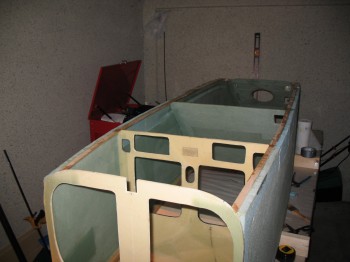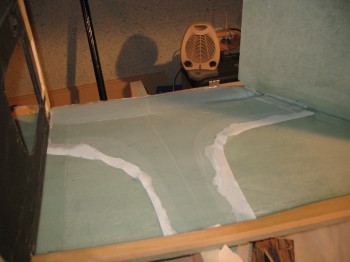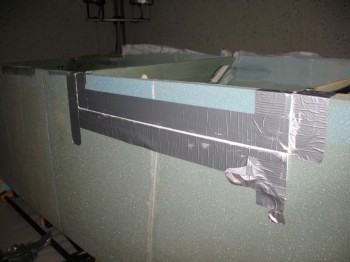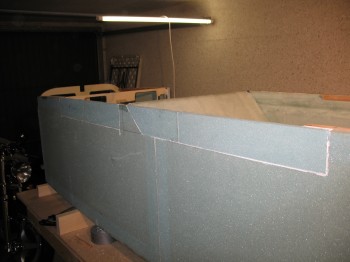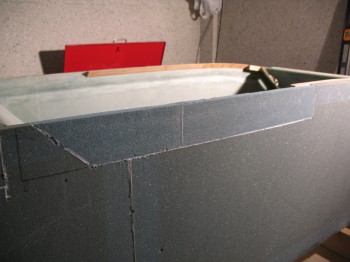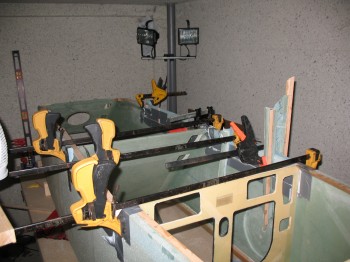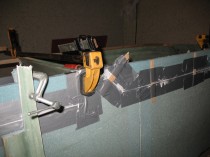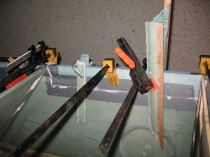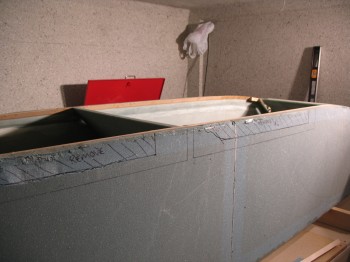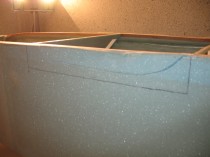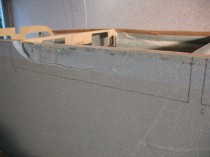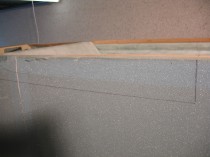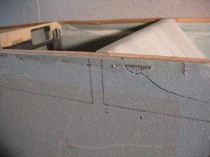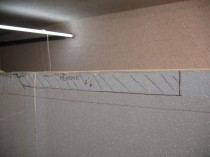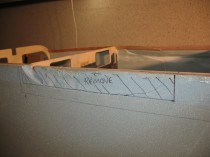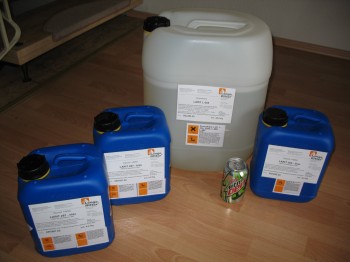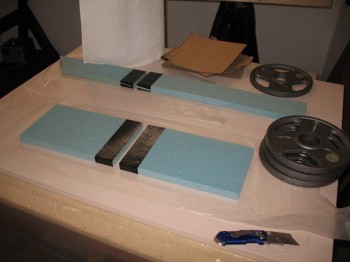The journey of a thousand miles begins with one step . . .
AND:
How do you eat an elephant? One bite at a time! Right?!
So you can call me chicken but I’m not taking any (more) chances with this fuselage bottom! I’m going to glass it step-by-step, and make sure I concentrate on each area. With these deep funky crevices that I have to glass down into, I want to ensure I can fully focus on smaller sections of glass. [I double checked my measurements for all my fuselage bottom divots against the plans, and they were all pretty darn close… In case you were wondering!]
Since I now have my fuselage “HOLE” repaired on the outside of the fuselage bottom, I’m ready to glass. The bottom fuselage foam is 1-3/4″ thick and I have to make it curve sharply downwards at around 8″ from the back edge, thus curving it sharply upwards from that 8″ point to the back edge. I don’t really like doing this because it has the potential to jack up the glass immediately under the clamps, but my plan is that I’m going to layup the glass and then clamp the edges at the apex of the curve to drive this fuselage down into the sled and have it cure with the nice curve it needs to follow the bottom contour of the fuselage.

